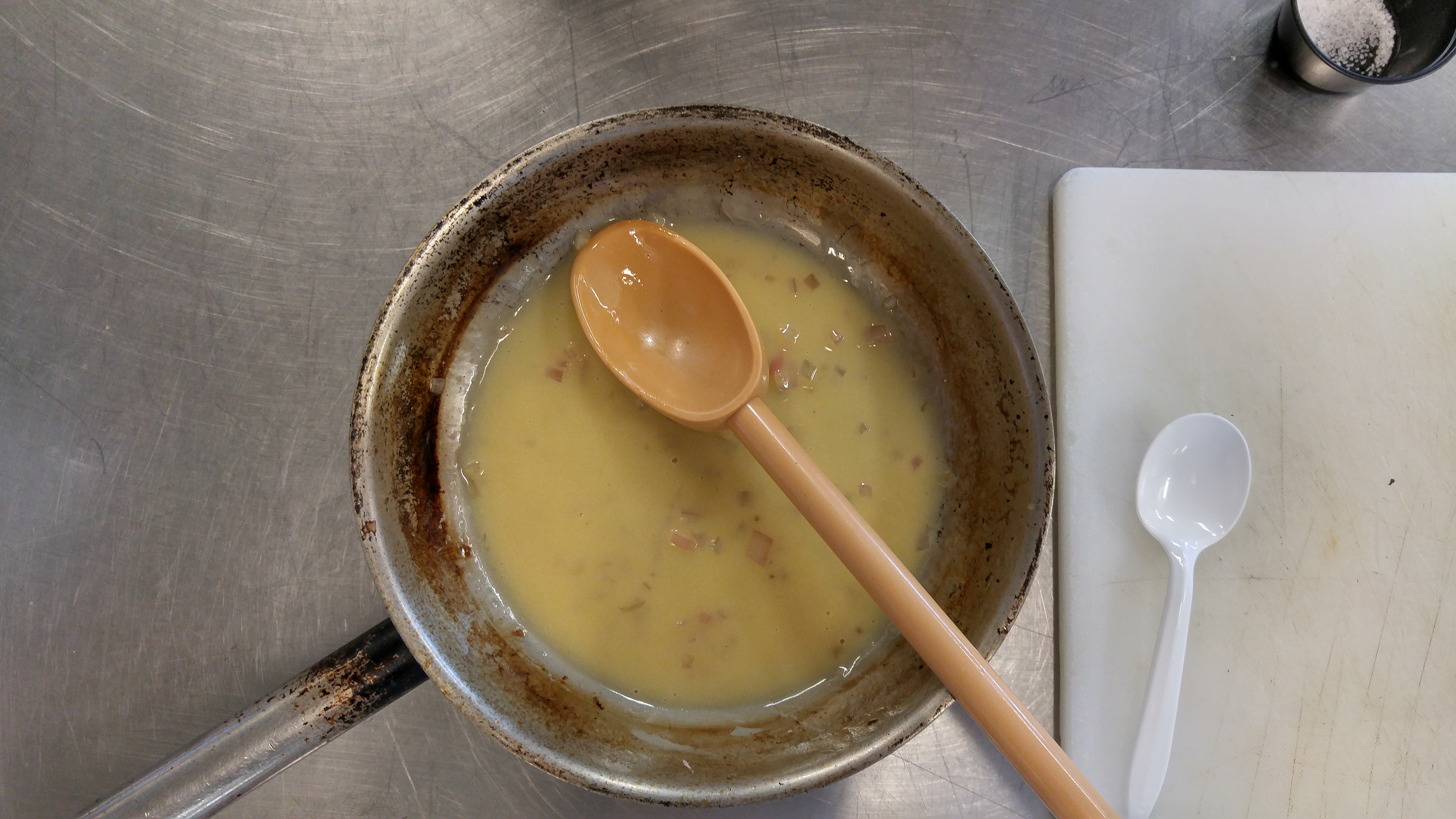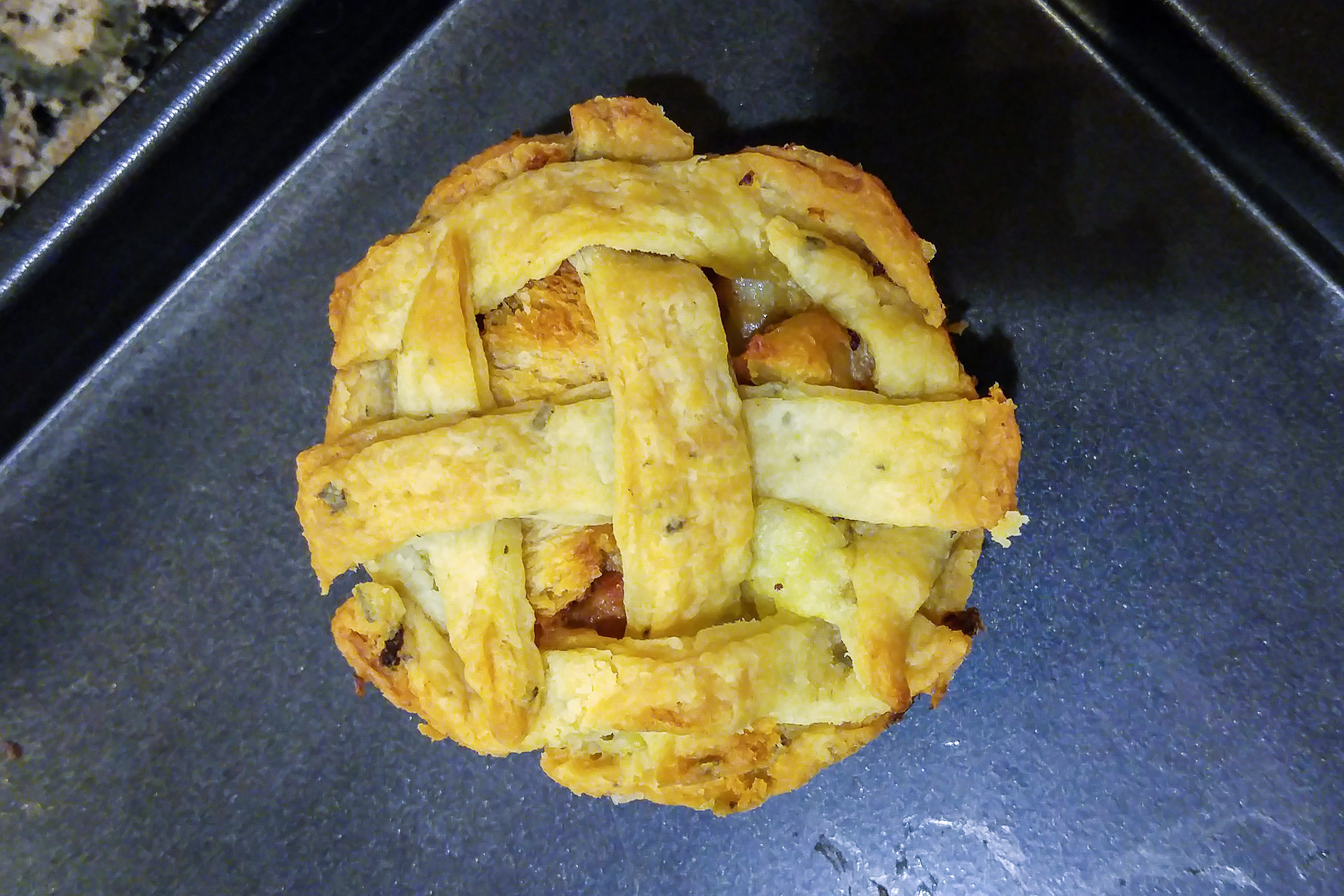Man, I have missed this:

I had lunch with a friend here at the Duke today (and I walked, getting me to 15,000 before noon), so why not stay and write some documentation?
I've also decided on a new rule. I gave up beer for February because I think there's a correlation between me drinking beer and me staying consistently 3 kg over my target. Well, not much changed, and I missed beer, so my New Rule is that I can have one beer per 10,000 steps (or fraction thereof). And I think I'll aggregate this over the week.
Think Progress grinds through the history of Trump Steaks™:
Reporters from Home magazine, Gourmet magazine, People, New York Daily News, and Every Day with Rachael Ray showed up to the launch, which featured speeches by both Levin and Trump. Trump took the opportunity to boast of the steaks’ quality, telling reporters that the product was going to be a boon for the company, equivalent to Trump Vodka, which had launched just a year earlier.
The steaks were only available for mail order, and ranged from the Classic Collection, which cost customers $199 for two filet mignons, two cowboy bone-in rib-eyes and 12 burgers, to $999 for 24 burgers and 16 steaks.
But despite the rash of media attention, [Sharper Image CEO Jerry] Levin said, the steaks just didn’t sell.
Not all reviews of Trump Steaks were bad. Sharon Dowell, former food editor for the Oklahoman, called the steaks “tender, juicy and absolutely among the best-tasting steaks I’ve cooked on my home grill.” The New York Post gave them a 7.5 out of 10, noting that it was “an undeniably good steak” — but still three times the price of another steak that they gave a 7 to in the same taste test. Gourmet, in their taste test, were less effusive, calling the steaks “edible, but not particularly good.”
Martha Stewart, however, had perhaps the most unique response to Trump Steaks. In an interview with Joan Rivers, the lifestyle mogul and former Apprentice contestant replied “Too bad!” when Rivers said that the steaks weren’t actually from a slaughtered Donald Trump.
This person is the front-runner for leadership of the Republican party.
Crain's lists five Chicago-area distilleries, including Few (my favorite), that have run out of room:
- The West Loop's CH Distillery plans to build a 20,000-square-foot distillery in Pilsen on the site of the old bottling building of the long-defunct Schoenhofen Brewery. It aims to boost capacity to more than 100,000 9-liter cases per year, up from about 8,000 in its current distillery and tasting room. The two-and-a-half-year-old distillery, whose top products are vodka, rum and two types of gin, produced 5,000 cases last year, up from 2,900 in 2014.
- Few Spirits in Evanston is seeking its fourth expansion in five years to meet demand for its barrel-aged products. The company doubled the size of its warehouse two years ago and is again running out of space. With production doubling last year, led by sales of gin and whiskey, Few is looking to expand again.
Local booze-makers are riding a boom in sales of craft spirits, which jumped 35 percent in 2015 to about 2.4 million 9-liter cases from 1.7 million in 2014, according to the American Distilling Institute's annual survey. That's after 42 percent sales growth in 2014 and a 50 percent spurt in 2013.
While figures aren't available for Illinois, the breakneck growth of CH Distillery, which distributes only in-state and has no immediate plans to do otherwise, offers a clear indication that the local market is just as robust.
I love Few's barrel-aged gin, which is as much a sipping spirit as a good Scotch or Bourbon. CH doesn't make all of their own stuff yet, so them opening their own distillery is good news.
Citylab reports that Chicago's open-sourced food safety analysis software has made our food inspectors much more effective. Other cities aren't adopting it, though:
Chicago started using the prediction tool for daily operations in February 2015, and the transition worked very smoothly, says Raed Mansour, innovation projects lead for the Department of Public Health. That’s because the department was careful to incorporate the algorithm in a way that minimally altered the existing business practices. Inspectors still get their assignments from a manager, for instance, but now the manager is generating schedules from the algorithm. The department will conduct an evaluation of the program after a year, and Mansour anticipates that the performance will meet or exceed the metrics from the test run.
But that was never meant to be the end of it. Back in November 2014, Schenk published the code for the algorithm on the programming website GitHub, so anyone in any other city could see exactly what Chicago did and adapt the program to their own community’s needs. That’s about as far as they could go to promote it, short of knocking on the door of every city hall in America. But the months since then have shown that it takes more than code to launch a municipal data program.
Chicago passed around the free samples, but a year later only one government has taken a bite: Montgomery County, Maryland, just northwest of Washington, D.C. The county hired a private company called Open Data Nation to adapt Chicago’s code for use in the new location. Carey Anne Nadeau, who heads the company, ran a two-month test of the adapted algorithm in fall 2015 that identified 27 percent more violations in the first month than business as usual, and finding them three days earlier.
There's a classic anti-pattern called "not invented here." That may be one of the factors. Another could be that the other cities' tech staff just aren't interested in trying new things. Chicago hasn't always been ahead of the curve, but I'm glad we've at least got the one guy.
Today I'm at Le Cordon Bleu learning sauces. Full report later.

Sunday morning, after Saturday's snowstorm:

Last night, making mini turkey pot pies for tomorrow:

That's all from scratch. Inside a rosemary-sage crust, from the bottom we've got turkey, pinot noir-reduction gravy, stuffing with organic Italian sausage, and cranberry sauce made with cranberries, orange, honey, and a secret ingredient that makes them amazing.
I think I'm going to gain three kilos this weekend.
The good: A new study shows that drinking 3-5 cups of coffee a day has measurable health benefits.
The bad: A black resident of Santa Monica, Calif., got hauled out of her apartment at gunpoint by 19 police officers after a white neighbor reported someone trying to break in.
The ugly: Yale law student Omar Aziz writes about the soul of a Jihadist.
And the neutral, which could be ugly: forecasters predict 15-30 cm of snow in Chicago tomorrow night into Saturday morning.